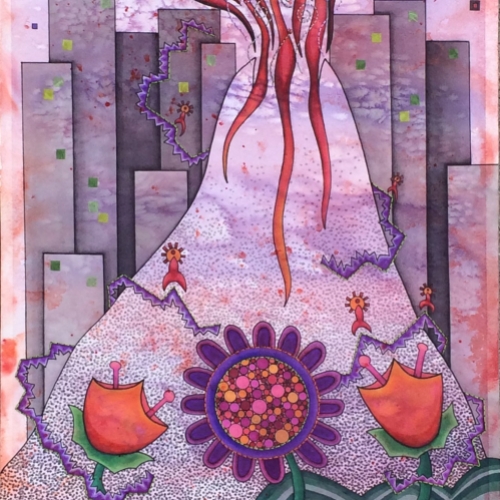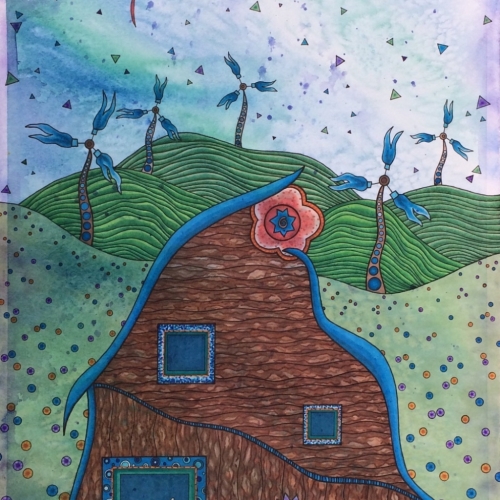Always Drifting Back
Always Drifting Back
When I look at the world around me, I see the interconnectedness of the spheres and systems within which humanity dwells and functions. I have long been influenced by such ideas, particularly since I first began investigating psychology in high school, and during my studies as an undergraduate when I encountered writings on Zen Buddhism in my early twenties. As life, my experiences, and my formal and informal education continues to impact my view of the world, I often step back and contemplate these ideas when I step into my studio and pore through images in my doodle books and various magazines and publications I have collected over the years, looking for my next bit of inspiration.
I began making and using doodle books more than a decade ago when I started formally teaching high school in a small rural community in central Nebraska. My personal sketchbook practice took the form of fifteen- or twenty‐minute meditative doodles in which I would sit down and start mark-making intuitively. I listen to music and try to allow the mark-making to happen spontaneously, not allowing myself to make conscious compositional decisions, but rather just allowing the lines and shapes to form and happen naturally. I think of it as a kind of “creative temperature taking,” a reflection of where my creative energy levels happen to be at that moment.
Most of my doodles do not make it into my final compositions. My doodle books contain seeds of inspiration for the ideas that form the basis of the finished works I create in watercolor, acrylic, Prismacolor markers, pigment liners, stitching, and sometimes collage. The imagery is often fantastical and whimsical, and almost always brightly colored. Having lived in Nebraska my entire life, and in two different communities of approximately 5,000 people for the past seventeen years, one may not look at my finished work and readily see rural culture as an influence on my work. My creatures and figures look more like Dr. Seuss characters than the wild and domestic creatures that roam the plains and prairies where I live. But nearly all my current work includes imagery of the natural world; and, though the plant life and landscapes contained in my work bear as much resemblance to the actual natural environment around me as do the creatures and figures, they are as reflective of living in rural Nebraska as are the more traditional art works one may find depicting representations of the hills, the plains, the rivers, and the wildlife found in rural areas.
I believe that as an artist I must remain true to myself if I am to maintain my practice. As an educator I appreciate works that convey traditional and representational imagery, works that have a less intense color palette than my own, but I always drift back to the imagery and colors that excite me in my own artmaking. Though my work is not what others may associate with rural life, it conveys a slice of the diversity of world views that can be found in small rural communities.



